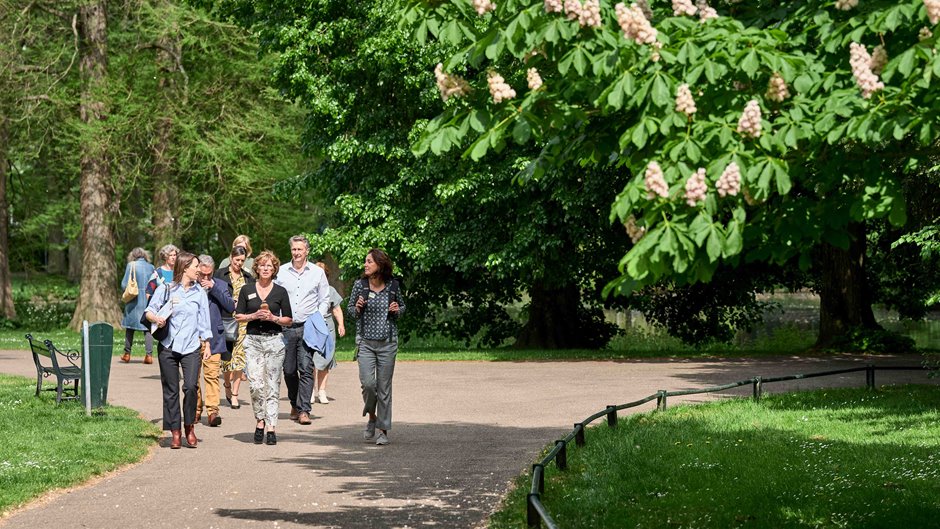It’s not about numbers
Art has always been an essential part of Esther’s life. “The prevailing mindset in society values utility and measurability, and we use the language that comes with this to defend and justify art and culture. But the significance of art experiences is not only about measurable outcomes. It is about connection, meaning-making, humanity, and being inspired. You can’t quantify that: this much connection, or an X amount of inspiration. It’s not about numbers.”
'Art is about connection, meaning-making, humanity, and being inspired'
Language beyond measurement
This led her to formulate her research question: how can we, within (cultural management) education, develop a language and argumentation to understand and describe the value of art (and art experiences) in society from the perspective of meaning? “Because it cannot be measured, we often label it vaguely. That's why a shared vocabulary is needed to better understand it. To continuously remind people working, or about to work, in the arts field that existential meaning is a crucial component of art’s value.”
Three questions
One of the methods Esther employs is interviewing first-year students and lecturers in Arts and Economics while walking. Three questions form the core of these conversations. First, she asks participants to bring something that reminds them of a specific art experience. This is accompanied by the question: “Tell me about what you brought and which particular art experience it relates to.” The second question is: “Who are you as an art lover? What do you do, and how do you like to do it?” And the third: “What significance do those art experiences hold in your life?” In addition to these interviews, Esther collects material from students walking in pairs as part of their study activities. Participants keep journals of art experiences and engage in reflective conversations with guidance from lecturers. She also experiments with so-called ‘existential wonderlabs,’ where themes such as ‘connection’ are explored in greater depth.
Phenomenology
The material Esther gathers is analysed phenomenologically. She explains: “This means I provide an empathetic, descriptive account.” Phenomenology is a philosophical approach that perceives experiences and phenomena as they present themselves, rather than relying on pre-established theories or assumptions. “Which words – and perhaps even images – are used, for example, to express the meaning of art experiences? I map this together with students and lecturers and create a dialogue around it.”
'Which words and images are used to express the meaning of art experiences?'
A continuous educational line
Ultimately, Esther aims to establish a long, continuous educational trajectory – from the moment a student begins a cultural management programme until the career they will pursue in the arts sector. “My question is: how can I turn the research methods I used to collect my data into pedagogy, and integrate them into education?” She thinks beyond HKU and wants to involve students from other cultural management-related programmes – about 12 in the Netherlands. Part of her PhD study also includes analysing these programmes to see how and to what extent they address art experience.
Minor programme
Her hope is that her doctoral research will lead to educational material, which can then be offered in a minor at HKU, giving students from other programmes access as well. “A better understanding of, and a richer vocabulary for, the non-measurable value – the significance of art experiences for people – gives (future) cultural managers the ability to discuss the value of art for society on a broader level than just organisational or business terms. They can engage with makers, funders, and society itself, and contribute to the public debate about the role of art in our world.”
Meaningful Artistic Research
The research is part of the programme Meaningful Artistic Research: a collaboration between HKU and the University of Humanistic Studies that offers PhD tracks in artistic research within the UvH’s Graduate School.
